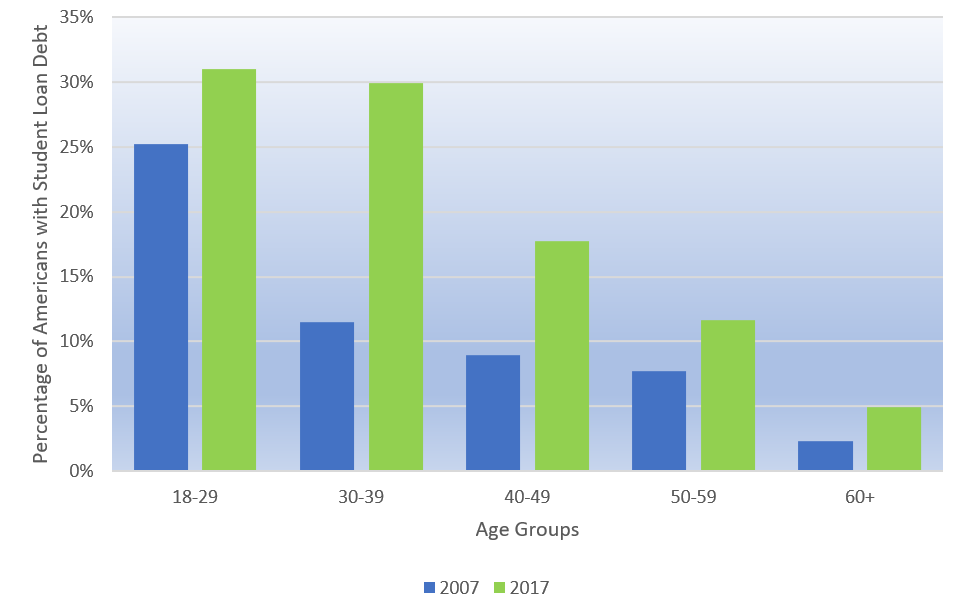
Navigating the landscape of student loan debt can feel overwhelming, especially with the staggering figures involved. According to Federal Student Aid, as of March 2021, 5.3 million borrowers were in default, collectively owing $116.6 billion—a significant 7% of the nation’s total $1.6 trillion student loan debt. These numbers highlight a critical need for borrowers to understand and leverage every available tool to manage their financial obligations effectively.
While Congress has provided substantial relief to millions, many borrowers still find themselves grappling with high interest rates and unmanageable payments. The good news is that with the right strategies, you can significantly reduce your financial burden. Learning how to secure a lower interest rate on your student loans can save you thousands of dollars over the life of the loan, directly impacting your monthly budget and long-term financial health.
This article is designed to empower you with clear, actionable steps, whether you’re proactively seeking to save money or are on the verge of missing payments. We’ll break down the most effective ways to lower your student loan interest rates and payments, providing you with a comprehensive roadmap to financial relief. Let’s dive into the strategies that can make a real difference, starting with the foundational understanding of your loan types.

1. **Understand Your Loan Types: Federal vs. Private**Before diving into specific strategies, it’s absolutely crucial to grasp the fundamental differences between federal and private student loans. Your options for securing a lower interest rate, or even negotiating settlement terms, depend heavily on the type of loans you carry. This distinction is the bedrock upon which all other repayment strategies are built.
Federal student loans, backed by the government, operate under a different set of rules. For instance, consolidating federal loans through the Department of Education will typically result in a slightly higher interest rate, not a lower one, because “the new rate is the weighted average of the interest rates on the loans being consolidated, rounded up to the nearest one-eighth of 1%.” Furthermore, federal loan rates “are set by Congress, so there’s no wiggle room for negotiation” on the rate itself. While they offer robust protections like income-driven repayment plans and potential forgiveness, these benefits are tied to their federal status.
On the flip side, private student loans are issued by banks, credit unions, and other financial institutions. These loans generally offer “more opportunities to work with your current lender or a new one to save on interest, lower student loan payments and more.” Private lenders have different incentives and are often more open to negotiation, especially when faced with the prospect of losing a borrower to a competitor or managing a struggling account. Understanding which category your loans fall into is the first step toward choosing the most effective path forward.
For the most part, if you are looking to lower the interest rate on federal loans, “your best bet is to refinance your loans with a private lender.” However, it’s vital to remember that if you choose this route, you “forgo any federal loan forgiveness or forbearance programs.” This trade-off needs careful consideration, as the unique protections offered by federal loans, such as the ability to get on income-driven repayment plans, are significant and often unavailable in the private market. Always weigh the potential savings against the loss of these valuable federal benefits.
Read more about: Unlocking Financial Freedom: 13 Proven Strategies to Erase Debt and Save Thousands in Interest

2. **Enroll in Automatic Payments**One of the simplest, yet often overlooked, ways to trim down your student loan interest rate is by setting up automatic payments. This strategy is a true ‘no-brainer’ that benefits both you and your lender. By automating your payments, you ensure consistency and reliability, which lenders appreciate, and in return, they often reward you with a rate discount. This discount applies to both private and federal student loans.
Most lenders and loan servicers offer a discount ranging from 0.25 to 0.5 of a percentage point for borrowers who enroll in autopay. While this might seem like a small fraction, the savings can accumulate significantly over the lifespan of your loan. For example, the context illustrates that “paying a 6.62% interest rate on $29,417 in student loan debt instead of 6.87% will save you $452 over 10 years.” This tangible saving for a minimal effort makes it an incredibly attractive option for any borrower.
Beyond the financial benefit, setting up automatic payments can also simplify your financial life. As James Lambridis, founder and CEO of DebtMD, wisely points out, it “will actually make your life easier since you won’t need to worry about missing a payment.” This reduces the risk of late fees and negative credit reporting, provided you “have enough money in your bank account each month to cover the payment.” It’s a win-win: you save money, and you gain peace of mind knowing your payments are handled automatically.
Read more about: Unmasking the Hidden Costs: Your Expert Guide to Avoiding Surprise Rental Fees for Homes and Cars

3. **Seek Out Additional Lender Discounts**While automatic payment discounts are common and widely promoted, some lenders go a step further by offering other forms of discounts that can further reduce your student loan interest rate. These are often loyalty-based or tied to other financial relationships you might have with the institution. Exploring these less obvious avenues can lead to additional savings that stack on top of your autopay discount.
For instance, the context highlights that “Citizens Bank may offer a 0.25 percentage point loyalty discount if you have an existing relationship, such as a bank account or another loan.” This means if you already bank with a particular institution or have another financial product with them, you might be eligible for a reduced rate on your student loan. It’s always worth checking with your current lender to inquire about any such programs or loyalty incentives that could be applicable to your situation.
Another example comes from SoFi, which “offers a ‘member discount’ if you take out a student loan after taking out a personal loan or an investment account.” These types of discounts are designed to incentivize existing customers to consolidate their financial activities with one provider. Don’t assume that only new customers get the best deals; sometimes, loyalty pays off. Making a quick call or checking your lender’s website for ‘member benefits’ or ‘loyalty programs’ could uncover valuable savings that you didn’t even know existed.
Read more about: Behind the Impasse: 12 Core Budget and Contract Challenges That Strain Film Production Partnerships

4. **Negotiate Directly with Your Private Lender**When it comes to private student loans, you may have more direct leverage to negotiate a lower interest rate with your lender. Unlike federal loans, where rates are fixed by Congress, private lenders have a greater degree of flexibility, especially if you present a compelling case for a rate reduction. This strategy is particularly relevant if you are facing financial hardship or if you have a competitive offer from another lender.
If you’re finding it difficult to keep up with your monthly payments, or if you’re exploring refinancing options with other institutions, your current private lender might be willing to negotiate to retain your business. While there’s “no guarantee that your lender will agree to a lower student loan interest rate, but it’s worth a try.” Openly communicating your financial challenges or your intent to refinance elsewhere provides an opportunity for your lender to reconsider your terms. They would often prefer to keep you as a customer, even at a slightly reduced rate, rather than lose you entirely.
However, it’s important to set realistic expectations for these negotiations. Mark Kantrowitz, an independent financial aid expert, notes that “borrowers who are experiencing financial hardship may be able to obtain a short-term interest rate reduction in extreme circumstances.” He adds a crucial point: “The lender is more likely to offer a forbearance or partial forbearance than reduce the interest rate.” While a rate reduction might be an uphill battle, temporary payment relief, or even an interest-only payment period, could still provide much-needed breathing room. The key is to initiate the conversation and explore all available options with your private lender.
Read more about: Why a Vehicle History Report Is the Indispensable Tool for Every Used Car Buyer in 2025

5. **Refinance Your Student Loans Strategically**Refinancing your student loans stands out as one of the most powerful methods to significantly reduce your interest rate and maximize overall savings. This process involves taking out a new loan, typically from a private lender, to pay off your existing student loans. The goal is to secure a new loan with a lower interest rate, which can lead to substantial savings on interest charges and potentially lower monthly payments.
The potential for savings through refinancing can be quite dramatic. The context illustrates this vividly: “To give you an idea of the potential savings, let’s say you’re eligible to reduce your interest rate from 7% to 4%. With a principal balance of $29,417, you’d save a whopping $5,247 on interest over 10 years.” Such a reduction can free up significant funds in your budget, allowing you to pay off your debt faster or allocate money to other financial goals. Your eligibility for these lower rates will depend on your credit health and current financial situation.
When considering refinancing, you also have the option of choosing between a fixed-rate loan and a variable-rate loan. Variable rates are often “typically lower than fixed rates but do come with the risk of increasing,” making fixed rates generally a more stable choice for most borrowers. Many top student loan refinance companies allow you to get prequalified without a hard credit check or commitment, which is an excellent way to explore your potential savings. Furthermore, services like Juno “pool student loan borrowers together and negotiate with lenders on their behalf for lower refinance interest rates,” offering another avenue to secure competitive terms. However, as noted earlier, remember that refinancing federal loans with a private lender means foregoing federal protections.
Read more about: Unlock Your Home’s Hidden Wealth: Simple, Tax-Free Strategies to Convert Equity into Income

6. **Leverage a Creditworthy Co-signer**If your credit score isn’t strong enough to qualify for the lowest interest rates on your own, bringing in a creditworthy co-signer can dramatically improve your chances. A co-signer is typically a trusted friend or family member who agrees to be equally responsible for the loan, thereby leveraging their stronger credit profile to secure better terms for you. This strategy is particularly common with private lenders.
When a person with excellent credit and a high income co-signs your loan application, it can significantly “increase your odds of getting approved and qualifying for a low rate.” The lender views the loan as less risky because there are now two parties legally obligated to make payments. This can be the key to unlocking interest rates that would otherwise be out of reach for borrowers with limited credit history or a less-than-stellar credit score. Many private lenders offer co-signer release programs, which allow you to remove your co-signer from the loan once you meet specific payment and credit requirements, offering a path to individual financial independence.
However, it’s imperative to understand the implications for your co-signer. As the context emphasizes, if a parent or partner co-signs your loan, “the loan will show up on the co-signer’s credit report and could potentially hurt their chances of getting credit when needed.” Moreover, if you miss a payment, “your co-signer is legally responsible for paying what you owe,” and non-payment “could damage both of your credit scores.” Open communication with your co-signer about any changes or financial difficulties is crucial to protecting both your relationship and their credit, underscoring the serious commitment involved.
Read more about: Mastering Your Auto Loan: Expert Strategies to Negotiate a Better Interest Rate and Save Thousands
7. **Commit to Building Your Credit Profile**For those who either don’t have a co-signer or prefer to manage their financial journey independently, dedicating time and effort to building a strong credit profile is an invaluable strategy for securing lower interest rates in the long run. Lenders use your credit score as a primary indicator of your creditworthiness, and a higher score signals a lower risk, making you eligible for more favorable loan terms.
Improving your credit history is not an overnight process, especially if you have negative items on your credit report, but it is a highly achievable goal. The first step is to “use a free credit monitoring service like the one Experian offers to review your credit report to get an idea of where you can make improvements.” Understanding your current standing and identifying areas for growth is essential. This detailed review will help you pinpoint inaccuracies, understand your credit utilization, and track your progress over time.
There are several actionable steps you can take to bolster your credit score. These include “paying down credit card balances,” which lowers your credit utilization ratio—a significant factor in credit scoring. It’s also crucial to “get caught up on past-due payments,” as payment history is the most important component of your score. Additionally, “disputing inaccurate credit report information” can quickly remove errors that might be dragging your score down. Finally, consider “getting added as an authorized user” on a credit card with a long, positive payment history from a trusted individual, as this can provide a boost to your own credit file by inheriting their good habits. By diligently working on these areas, you lay the foundation for better financial opportunities, including access to lower student loan interest rates in the future.
Navigating student loan debt requires a multifaceted approach, extending beyond just lowering your interest rate. For many, the challenge lies in managing monthly payments, especially when unforeseen circumstances arise or when loans enter default. Fortunately, there are robust strategies available to address these situations, providing pathways to make payments more manageable, avert default, or even resolve defaulted loans. We will now delve into these crucial options, offering practical guidance to empower you in your financial journey and uncover hidden savings. These next items will help you navigate the complexities of loan management and explore avenues for relief that could profoundly impact your financial well-being.
Read more about: Unleashed Power: Ranking the 15 Most Dominant ’70s Muscle Cars by Pure Horsepower

8. **Explore Income-Driven Repayment (IDR) Plans**For federal student loan borrowers, Income-Driven Repayment (IDR) plans stand out as a vital safety net designed to make monthly payments affordable based on your income and family size. These plans are a cornerstone of federal loan protection, ensuring that even with significant debt, your payments remain manageable. This is particularly beneficial for those whose incomes fluctuate or are lower relative to their debt burden, preventing the stress of unmanageable monthly obligations.
Under an IDR plan, your monthly payment is recalculated to be between 10% and 20% of your discretionary income. This can drastically reduce your payments, sometimes even to $0, if your income is low enough. Furthermore, IDR plans extend your repayment term to 20 or 25 years, and critically, any remaining loan balance after this period is forgiven. This forgiveness feature can offer immense long-term relief, although it’s important to note that the Department of Education has occasionally paused the processing of new applications, and specific plans, like the SAVE plan, have faced temporary blocks.
While IDR plans offer substantial relief by lowering payments and providing a path to forgiveness, it’s essential to understand that they are exclusively for federal student loans. If you have private loans, these options are not available to you. Always contact your federal loan servicer to discuss eligibility and to apply for the IDR plan that best suits your financial situation, as choosing the right plan can significantly impact your monthly budget and ultimate debt payoff.
Read more about: 14 Budgeting Power Plays: Essential Strategies for Lasting Financial Health and Stability
9. **Consider Refinancing with a Longer Repayment Term**Sometimes, a lower interest rate isn’t the only solution for reducing monthly financial strain; extending your repayment term can also provide significant breathing room. This strategy is particularly useful if you’re struggling with high monthly payments but can’t secure a lower interest rate, or if your primary goal is to free up cash flow in your monthly budget. While it may increase the total interest paid over the life of the loan, it serves as an immediate relief valve for your finances.
Refinancing your student loans with a longer term means stretching out your payments over a more extended period, such as 15 or 20 years, instead of the standard 10. For instance, the context illustrates that refinancing $29,417 in student loans at the same 6.87% rate from a 10-year to a 20-year term could drop your monthly payment from $340 to $226. This substantial reduction can make your debt much more manageable on a month-to-month basis, allowing you to meet other financial obligations or build an emergency fund.
However, it’s crucial to acknowledge the trade-off inherent in this approach: a longer repayment term often means paying more in total interest over the life of the loan. The example shows that extending the term from 10 to 20 years could add an extra $13,437 in interest. Therefore, while this option provides immediate relief, it requires careful consideration of your long-term financial goals and the total cost. It’s always wise to use a student loan refinance calculator to compare various scenarios and ensure this strategy aligns with your overall financial health.
Read more about: Credit Card Debt at Record Highs: 11 Expert Strategies to Take Control of Your Finances and Pay Down Balances

10. **Request a Loan Modification for Private Loans**For borrowers with private student loans who find themselves in financial distress, a loan modification can be a critical tool to prevent default and stabilize your financial situation. Unlike federal loans which have standardized programs like IDR, private lenders often offer more flexibility for negotiation, especially when you are proactively communicating your struggles to them. This avenue can offer tailored relief when traditional payment plans become untenable.
A loan modification involves your lender agreeing to alter the original terms of your loan, making your payments more manageable. These modifications can take several forms, including lower monthly payments, a temporary period of interest-only payments, or even a reduction in the interest rate, though the context suggests the latter is less common in extreme circumstances compared to temporary relief. The goal is to create a payment plan that you can realistically afford, helping you stay current and avoid the severe consequences of default.
While a loan modification can provide much-needed breathing room, it’s important to be aware that you may end up paying more in the long run due to extended terms or capitalized interest. However, in times of genuine financial difficulty, the immediate benefit of reduced stress and avoiding damage to your credit score often outweighs the increased long-term cost. If you are struggling with your private student loan payments, reaching out to your lender to discuss modification options should be one of your first steps; their willingness to work with you often increases if you communicate before missing payments.
Read more about: Unlock $150+ Monthly Savings: Your Essential Guide to Smart Auto Loan Refinancing

11. **Understanding Student Loan Settlement: When It’s an Option**For borrowers who have defaulted on their student loans, the concept of a “student loan settlement” offers a potential pathway to significantly reduce the total amount owed. This process, while appealing, is not a common solution for loans in good standing; it is typically reserved for extreme circumstances where loans have already entered default. Understanding when and how settlement works is crucial for those facing severe financial hardship with their student debt.
Student loan settlement involves negotiating with your loan servicers or collection agencies to agree upon a lump-sum payment that is lower than your total outstanding balance, including principal, interest, and collection fees. Once the agreed-upon amount is paid, your obligation for the loans is satisfied, and the default status can be removed from your credit report. Adam Minsky, an attorney specializing in student loan law, confirms that “in most cases, only defaulted student loans can be settled or negotiated,” highlighting the serious prerequisite for this option.
It’s important to distinguish between federal and private loan settlements. Federal loan settlements are “extremely rare” because the government has aggressive collection measures, including wage garnishment and tax refund seizure, reducing their incentive to negotiate. While possible under “extenuating circumstances,” federal guidelines limit balance reductions, often resulting in only a marginal benefit. Private lenders, on the other hand, lack these governmental collection powers and “may be more likely to settle your loans,” especially considering the age of the debt and the borrower’s circumstances. However, settlement does come with significant drawbacks: it requires a substantial upfront lump-sum payment (often up to 90% of the owed amount), it damages your credit report for seven years, and the waived portion of the debt may be considered taxable income.

12. **Step-by-Step Guide to Negotiating a Student Loan Settlement**If you find yourself in the challenging position of having defaulted student loans and believe settlement is your best option, a structured approach is key to navigating the negotiation process. While student loan settlement is straightforward when well-prepared, it requires diligence and an understanding of the steps involved. This guide will walk you through the essential actions to take, ensuring you are equipped to seek a favorable outcome.
The first critical step is to gather comprehensive documentation that supports your inability to repay the loans through other means. This includes health records if a mental or physical illness prevents steady employment, income documents such as pay stubs, W-2s, and tax returns, and financial records detailing any extenuating circumstances like caring for ill family members or daycare costs. Additionally, providing your credit reports and any inheritance information (or lack thereof) helps build a strong case by demonstrating your financial hardship and limited resources, as collection agencies will often inquire about these details.
Once your documentation is in order, contact the collections agency responsible for your defaulted loans. They are the party with whom you will negotiate. When speaking with a representative, clearly state your desire to settle the debt for a portion of the total amount owed and present your financial hardship or medical issues as reasons for your request. It’s often beneficial to let the collector make the initial settlement offer, giving you a stronger negotiating position. Be aware that federal student loans have specific settlement options, such as paying only principal and interest, or 90% of principal plus interest, with collection costs waived. For private loans, you might negotiate a settlement for 40% to 70% of the owed amount, with terms varying by lender.
Upon reaching a verbal agreement, insist on receiving the settlement terms in writing. This document will detail the payment amount and the deadline. Carefully review every aspect for accuracy before agreeing. It is paramount that you make the agreed-upon lump sum payment by the specified deadline, as failure to do so will void the agreement and reinstate your full debt plus additional fees. After making the payment, always request a “paid-in-full” letter. This crucial document, typically received about 45 business days after your final payment clears, serves as official proof that your debt obligation has been fully satisfied, protecting you from future claims.
Read more about: Unlocking Financial Freedom: 13 Proven Strategies to Erase Debt and Save Thousands in Interest

13. **Discover Alternatives to Student Loan Settlement**While student loan settlement can provide a definitive resolution for defaulted loans, it isn’t always the right path for everyone, especially given its stringent requirements and potential negative impacts. Fortunately, several other alternatives exist for borrowers in default or those at risk of falling behind on payments, offering different routes to regain control of your student loan debt without resorting to a full settlement. These options often focus on rehabilitation or restructuring your loans.
One primary alternative for federal loans is **Student Loan Rehabilitation**. This program allows you to move your loans out of default by agreeing to a “reasonable monthly payment” determined by your servicer. Successfully making nine such payments within 20 days of their due dates will rehabilitate your loans, removing the default status. This is a powerful tool for federal borrowers looking to restore their good standing and regain eligibility for federal benefits.
Another federal loan alternative is **Loan Consolidation** through a Direct Consolidation Loan. To qualify for this, you must make three consecutive, on-time payments on your defaulted federal loans and agree to enroll in an Income-Driven Repayment (IDR) plan after consolidation. This combines multiple federal loans into a single new loan with a single monthly payment, making management simpler and potentially opening up new repayment options.
Finally, **Alternative Payment Plans** and **Student Loan Refinancing** with a co-signer offer additional avenues. For federal loans, you may still access IDR plans even if you’re struggling. For private loans, lenders might be open to temporary reduced or interest-only payments, or even loan modifications, as discussed earlier. If your credit is too low to refinance on your own due to default, a creditworthy co-signer could enable you to refinance into a new private loan, potentially with more favorable terms, though this means losing federal protections. These alternatives provide flexibility and a chance to get back on track without the finality and potential downsides of settlement.
Read more about: Unveiling California’s Enduring Grandeur: A Journey Through History, Innovation, and Natural Wonders

14. **Maximize Savings Through Tax Deductions and Rebates**Even when direct interest rate reductions seem out of reach, clever financial planning can still yield significant savings on your student loan costs. Maximizing tax deductions and exploring available rebates are often overlooked strategies that can effectively reduce your overall financial burden, allowing you to keep more of your hard-earned money. These methods offer a different angle to chipping away at the true cost of borrowing.
One of the most impactful ways to save is by utilizing the **student loan interest deduction** on your tax return. This is an “above-the-line exclusion from income,” meaning you can claim it even if you don’t itemize your deductions, making it accessible to a wider range of taxpayers. For the 2024 tax year, eligible individuals with a modified adjusted gross income (MAGI) of less than $80,000 (or married filers under $165,000) can deduct up to $2,500 worth of student loan interest paid throughout the year. This deduction effectively acts as a discount on your interest rate, equal to your marginal income tax rate, as noted by Mark Kantrowitz, an independent financial aid expert.
Beyond tax deductions, some lenders and refinancing platforms offer **cash back specials and refinancing rebates** as incentives. While these don’t directly lower your interest rate, they provide a direct financial benefit that can offset your loan costs. For example, Credible offers a “$200 gift card” if you find another lender offering a lower Annual Percentage Rate (APR) on a refinance loan. These types of offers can be a welcome bonus, putting money back in your pocket and reducing your effective cost of borrowing. Always be on the lookout for such promotions when exploring refinancing or new loan products, as they can represent tangible savings.
Read more about: Smart Moves for Your Golden Years: The 14 Best States for Affordable Retirement Living and Low Taxes
Navigating student loan debt effectively is a journey that often requires a blend of proactive planning, strategic negotiation, and a keen eye for every available saving opportunity. From leveraging federal protections like income-driven repayment plans to exploring loan modifications and understanding the nuances of settlement, every step you take brings you closer to financial freedom. Remember, your financial journey is unique, and empowering yourself with this knowledge is the first and most crucial step toward taking control of your student loan debt. By diligently applying these strategies—whether adjusting payment plans, tackling default, or maximizing tax benefits—you can significantly alleviate your financial burden and build a more secure future. It’s not just about paying off debt; it’s about making informed choices that pave the way for lasting financial stability.






